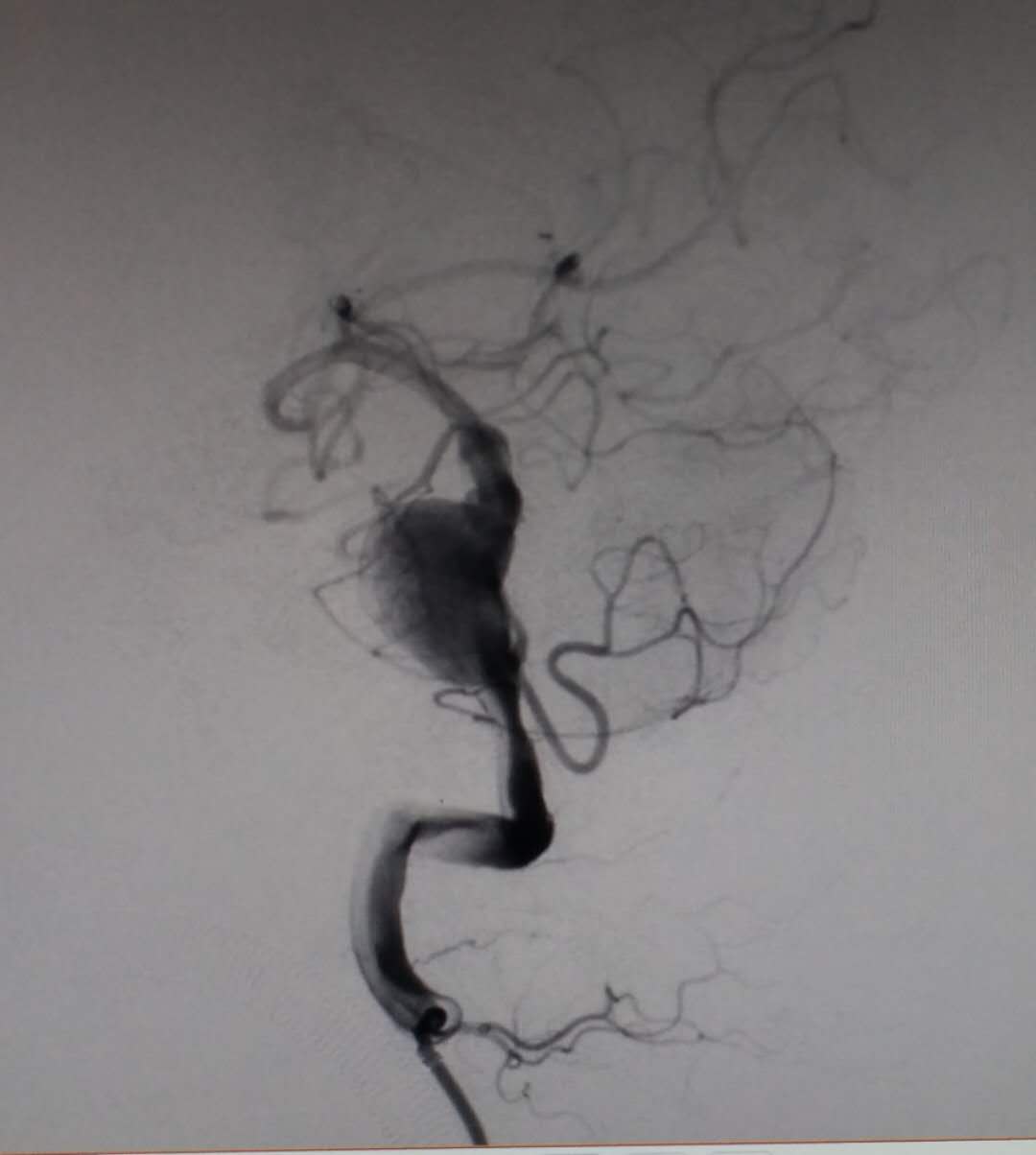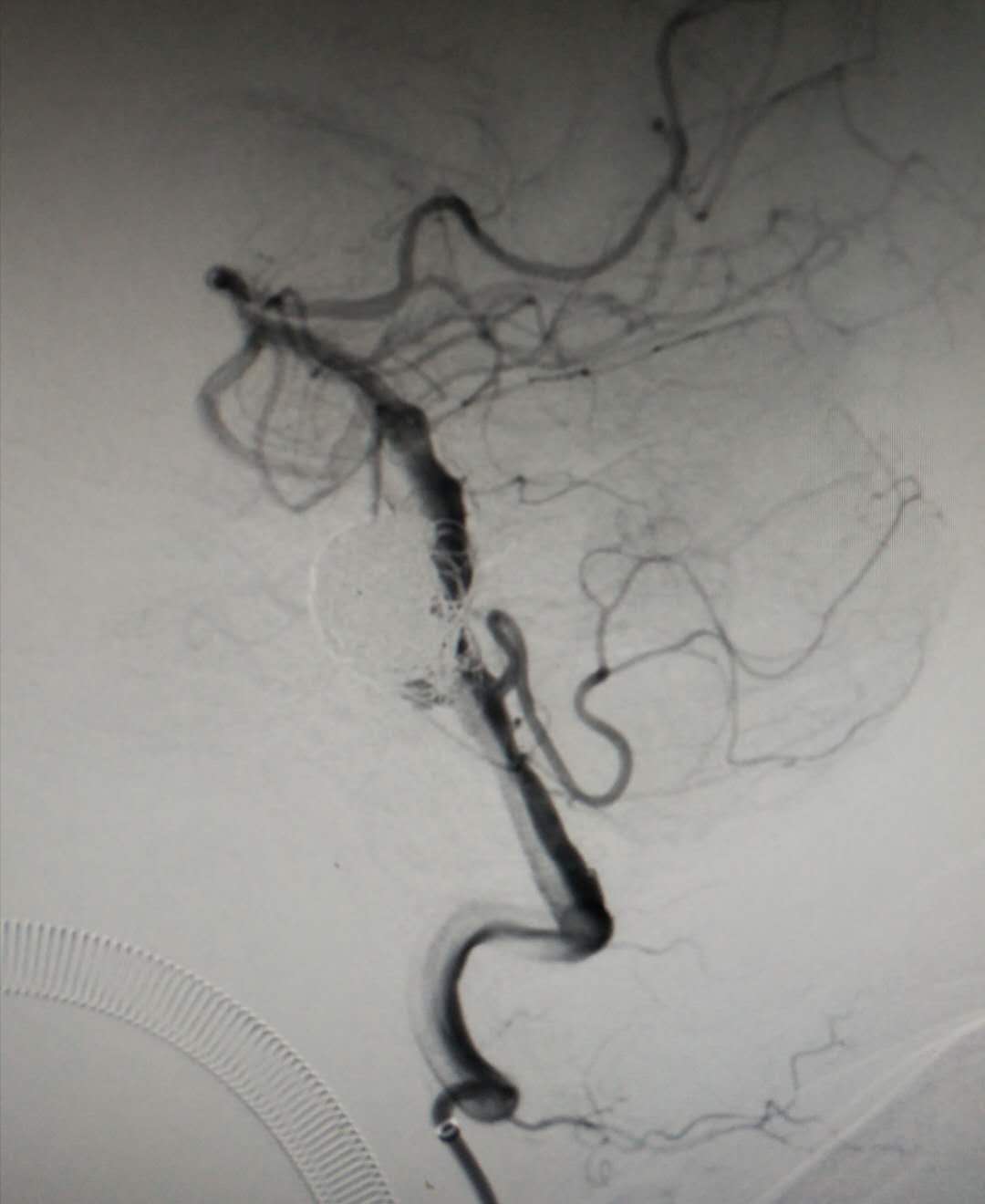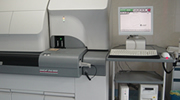A Huge Aneurysm in the Cerebrovascular Vessels Like “Sensitive Bomb” Could Be "Dismantled" in 1 Hour
Hits: 3254 Time: 2019-02-12
Mr. Zhao (alias), 57 years old, began to experience headache , nausea and vomiting a year ago, was diagnosed in other hospitals with a right side vertebral mezzanine aneurysm . After surgery, the condition was good. A few months ago, Mr. Zhao felt a headache in his pillow after a burst. However, its level was lighter than before. There was nausea or vomiting unavailable. He saw the Dr. Wan Shu, director of the Brain Center of Zhejiang Hospital. With occupational sensitivity to determine that the aneurysm relapsed, he immediately arranged the patient for hospitalization and performed cerebrovascular angiography (DSA). The Aneurysm was found with the maximum diameter of 22 mm in the unfavorable position. It was in front of the brain stem. The important artery was near the aneurysm behind the back of the cerebellum. "The brain stem is the center of life. The instructions of heartbeat and respiration are coming from here, which has always been a relatively restricted area for surgery. Minimally invasive intravascular interventional therapy is the first choice, but it is still a great challenge for the patient. We should not only completely embolize the huge aneurysm, but also keep the posterior inferior cerebellar artery," Wan Shu said.


There is a "bomb" in the cerebrovascular vessel that can be detonated at any time
Aneurysm was because of the stretched out from a part of the artery wall that is vulnerable, forming a permanent expansion, like blowing a balloon. That was easily ruptured to lead to bleeding in the subcavity of the cobwebs. Aneurysms were not our true sense of tumor. It was very normal for many people. General speaking, the aneurysm tumor was not large. Only through the contrast examination, it was not easy to detect. Occasionally emotional agitation would lead to rupture bleeding. Therefore, their life was at risk.
The first symptoms of intracranial aneurysm rupture are mostly sudden severe headache, this pain is very severe, is the most severe in the patient's life, the disease further progress, the rupture of the blood vessels a lot of bleeding can lead to paraplegia, aphasia, confusion, coma and even death.

1 hour to defuse the "bomb"
Mr. Zhao's huge aneurysm must be treated with interventional surgery. Led by Wan Shu, the intervention section of Zhejiang Hospital had made a full-hemp stent-assisted spring ring embolism. During the operation, the huge aneurysm was slowly filled with spring rings, which ensure the smooth blood flow to the lower artery in the back of the lower brain. Although the operation was difficult, under the skilled operation of Wanshu team, the “bomb” in Mr. Zhao's skull was successfully dismantled. The patient recovered well after surgery and had no sequelae.

According to Wan Shu, since the release of the results of the International Cobweb Subcavity Hemorrhage Study (ISAT) in 2002, cerebrovascular intracavity interventional medicine had been developed rapidly. That had become the most important and preferred treatment for intracranial aneurysms. He reminded that intracranial aneurysms were common cerebrovascular emergencies and critical illnesses, an indefinite time bomb for the human body. Every time you bleed, the mortality rate will double. That’s to say. Mortality rate was 30 to 40% when it comes to one break; It will be 60 to 80% for twice; That will be close to 100% for three times. The chance of rupture of a huge aneurysm was much higher than the one of normal one. Once there was sudden severe headache, nausea and vomiting and other symptoms, or sudden eyelids hard to open, existence of a shadow in front of you, you had to see a doctor in a timely manner. In addition, people with a family history of cerebrovascular disease, "three high" medical history, habit of smoking, it was best to do regular professional cerebrovascular examination.
Since its establishment, Zhejiang Hospital Brain Center had fully integrated the relevant disciplines of neurology, neurosurgery, neuro-intervention, neuroimaging, neuroelectronic physiology and neurorehabilitation so as to achieve multidisciplinary integration, complementary advantages, and achieve an integrated diagnosis and treatment model of prevention-treatment-nursing-rehabilitation. With the further reform of "Only one time for patients to deal with hospital business" policy, Zhejiang Hospital Brain Center, with the aim of realizing multidisciplinary full integration, complementary advantages, will be committed to bring more cerebrovascular patients a one-stop, all-round, standardized medical services.
Sourcing from: Brain Center
Collecting and writing by : Wu Jing from Publicity Center





